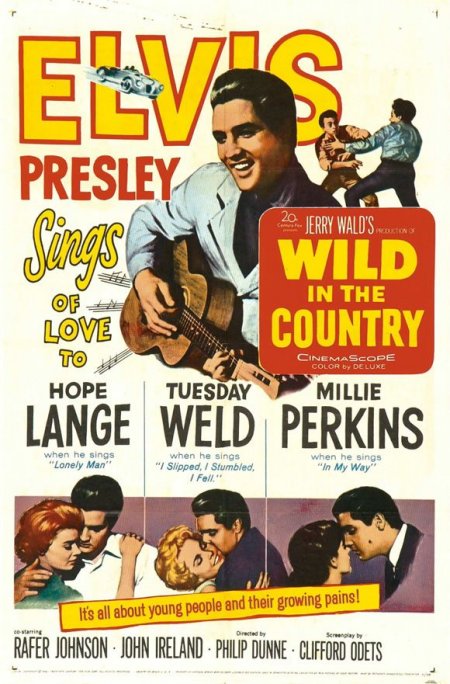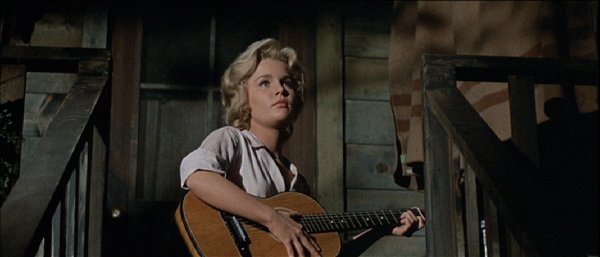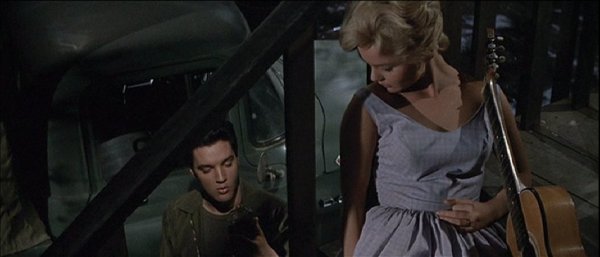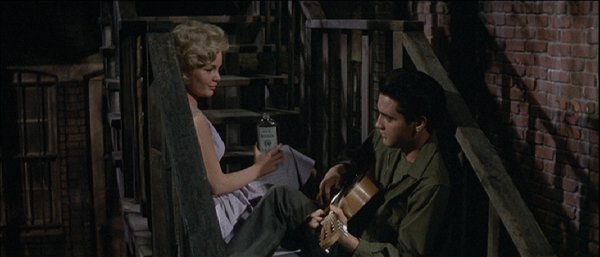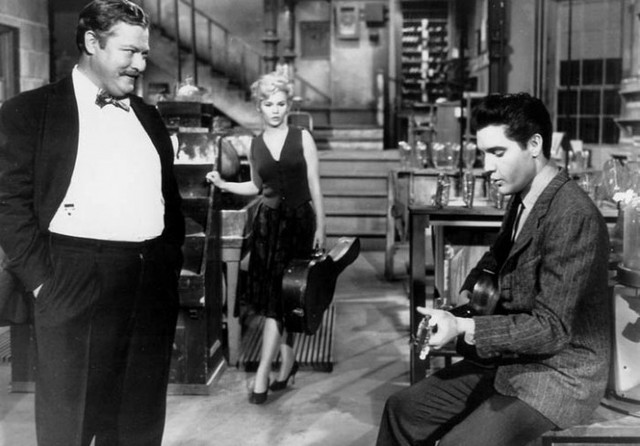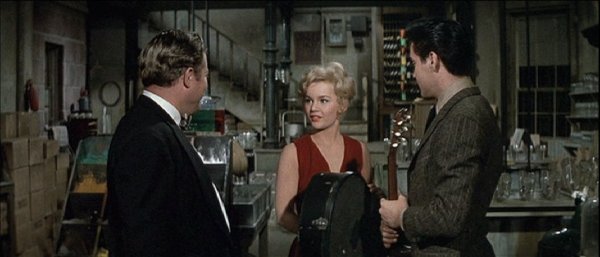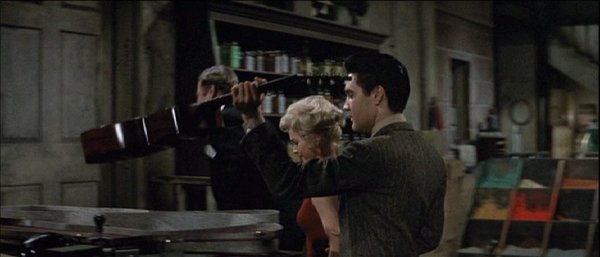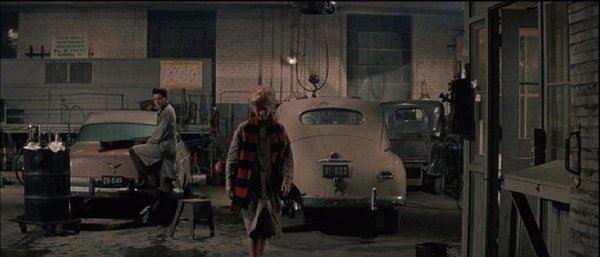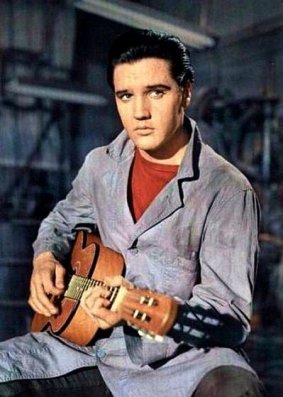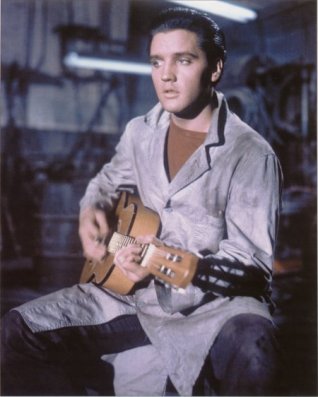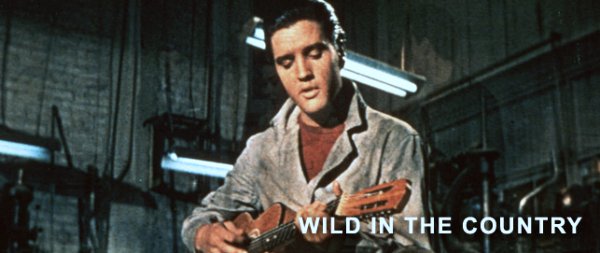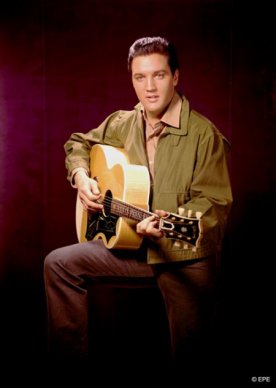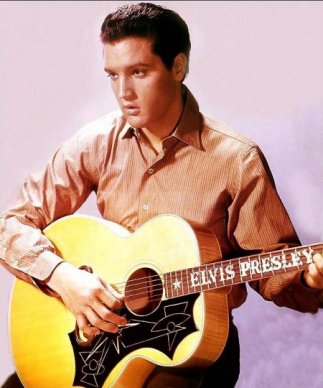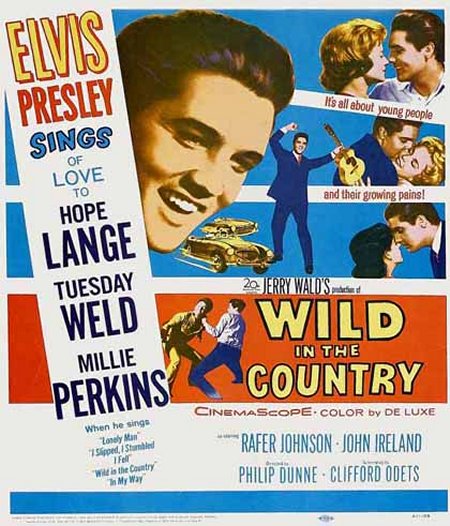 |
Parlor style steel string
The 1961 release of Wild in the Country was Elvis' seventh film and his third and last for 20th Century Fox. Set in the Shenandoah Valley, filming began in late 1960 with location shooting in Napa Valley.* Elvis was cast as a troubled youth with a flair for writing released in the care of his distant uncle and encouraged by his court assigned social worker/pscychologist played by Hope Lange, one of his three love interests in the film.
The other two love interests in the film were played by Tuesday Weld and Millie Perkins fresh from her starring role in The Diary of Anne Frank. Though intended mainly to be a dramatic role, Elvis sings several songs, naturally, one with a guitar. There's nothing extraordinary or unique about the guitars in the film but interestingly enough, Wild In The Country is one of the few movies where Elvis doesn't moonlight or portray an entertainer and the guitar, instead of his singing, is used as part of the plot, albeit minor.
The guitar, is a Parlor style steel string acoustic of uncertain manufacture though several features of the guitar, including the headstock shape, are highly reminiscent of the Yamaha "Dynamic" series guitars of the 1950's and early 1960's. A parlor steel string is a small bodied guitar, many like a nylon or gut string classical guitar in size and shape that also features a slotted headstock, wide fretboard on a neck joined at the body at the 12th fret. Unlike a traditional classical though this has fret markers and steel strings. This also has a pinless bridge that looks to be bolted to the top.
In the film it belongs to Tuesday Weld's character, a single mother who in several scenes is pictured on the steps drinking and strumming on the guitar. She asks about the guitar Elvis' character's mother taught them to play. Promotional materials for the film listed songs that were to be featured in the film and who Elvis was to sing them to. Elvis is first seen using the guitar to sing In My Way to Tuesday Weld on the porch, and not Millie Perkins as the poster described.
One review in Variety at the time mentions the fact that guitars "rather mysteriously keep turning up on the premises" in the film.** It is likely they initially were a bigger part of the story. In the story we see Elvis briefly playing with a Martin like acoustic that in the film is a new guitar for Tuesday Weld's character. She then gives her old one to Elvis.
The songs Lonely Man and Forget Me Never were recorded for inclusion in the film but were cut from the final print, although Lonely Man featured in part of the trailer for the film.* When Elvis leaves and takes a new job Tuesday's character brings him the guitar he left behind. There followed a scene cut from the film where he apparently used it to perform Lonely Man. He will be falsely accused by his distant uncle, Tuesday's father, played by William Mims, of stealing it later in the film in a plot point that fails to develop.
Filming did not complete until mid January of 1961 but Elvis had to return
in February to shoot a new ending. The ending initially had Hope Lange's
character commit suicide when thinking Elvis' would be tried for
accidentally kills that of Gary
Lockwood's, but early viewings were unfavorable to that ending.
Lockwood, incidentally would later star with Elvis in It
Happened at the World's Fair.
Oddly enough,
studio photos taken of Elvis for the film show him with his recently
refurbished 1956 Gibson J-200 instead of any
guitar that appeared in the film and later posters picture him with
a
Harmony H162,
An interesting side note, Tuesday
Weld would star more than 25 years later in Heartbreak
Hotel, a fantasy film where Elvis lives because he gets
kidnapped and learns the rode to health and rediscovers his roots by the
son of a fan, Weld, again a single mother.
This page added August 15, 2010 is part of the section The Movie Guitars of Elvis Presley. * courtesy Elvis
Presley Film Society
|
|
All photos on this site (that we didn't borrow) unless otherwise indicated are the property of either Scotty Moore or James V. Roy and unauthorized use or reproduction is prohibited. |
